Family LESTIDAE - Reedings
The damselfly in this family has narrow wings and slender body, rests with wings closed. We found only one species of this family in Brisbane.
Wandering Ringtail - Austrolestes leda
- This page contains information and pictures about Common Ringtail Damselflies that we found in the Brisbane area, Queensland, Australia.
-
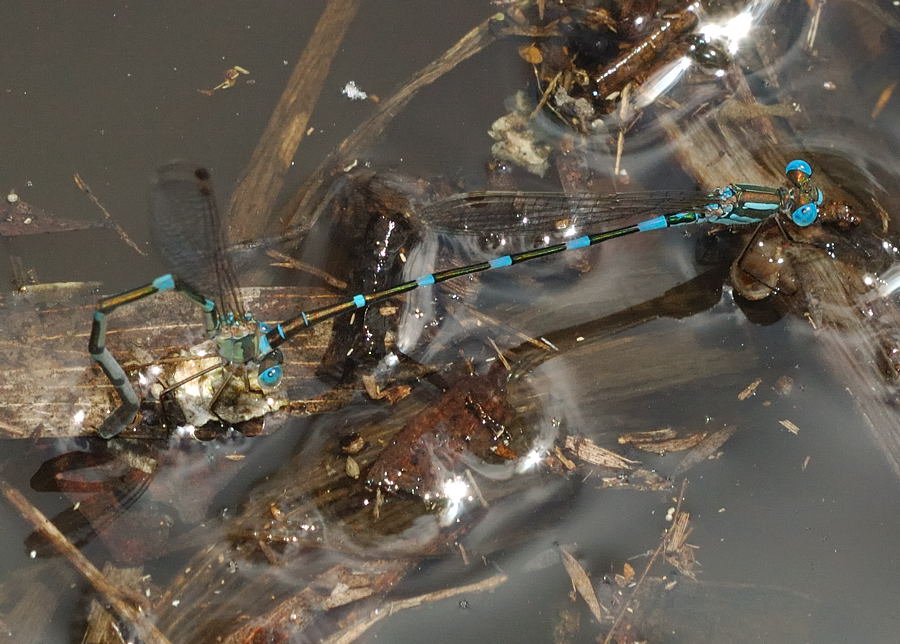
- Mating pair, body length 40mm
- Male Ringtail is blue in colour. The young male in the above picture is still in pale colour. When it become older and ready for mating, it will turn into mature male blue colour.
- The mature female Common Ringtail is pale blue in colour.
- They are not common on large waters, we usually found them near slow running creek. We sometimes found them hunting in bush far away from waters. The damselfly can be found even in a winter sunny day in Brisbane.
Male
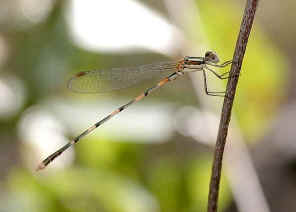
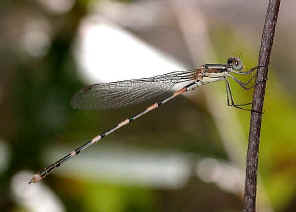
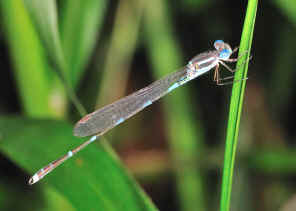
- Immature male
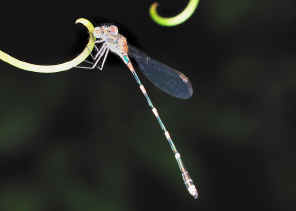
- Next to this young male, their were a large group of midgets flying around. The damselfly flied to the midgets and flied back to the resting point many times when we taking those pictures. One in a few trips, the damselfly caught a small midget.
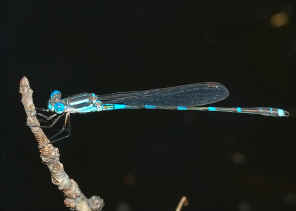
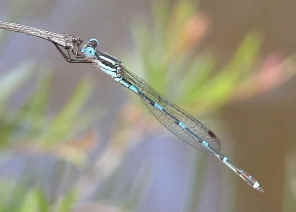
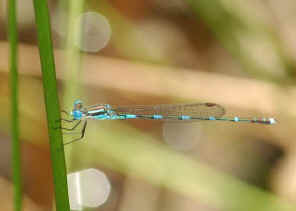
- Mature Male
- Notice the blue "tail-light" tip of the abdomen - hence their common name Ringtail.
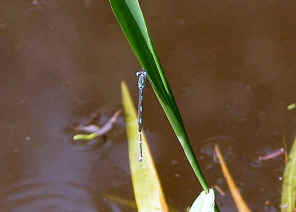
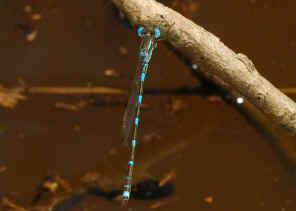
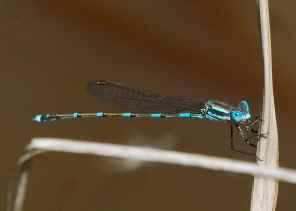
- The mature males come back to waters and waiting for the females.
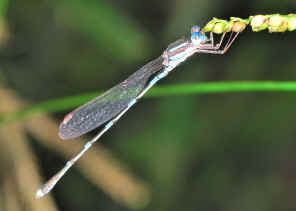
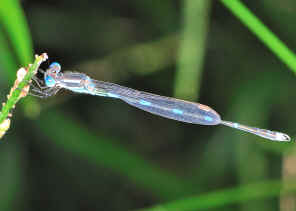
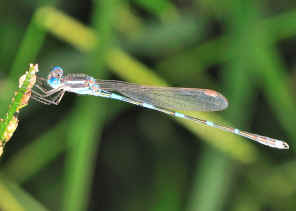
Female
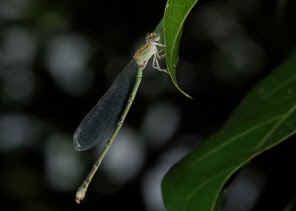
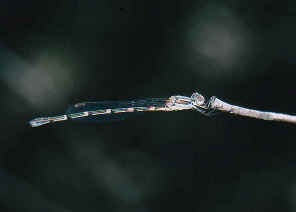
- Young female
- Females looked similar to male, except they do not have the ring at the abdomen tip.
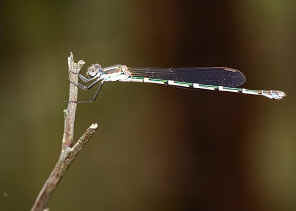
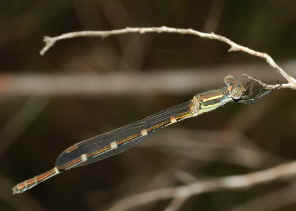
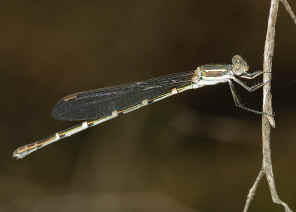
- Immature female, body length 35mm
- We took the female pictures in early summer on the hill top of White Hill in Brisbane where was quite far away from any water. The female damselfly was camouflaged as part of the tip of the stem.
- Also found near a dry creek bed in Karawatha Forest on Nov 2007.
- Mature females have some pale blue colour. They will return to the waters to mate and lay eggs. As you may expected, it is not easy to found a matured female alone near waters. Those matured females will be accomplished by males, as shown in this page below.
Mating
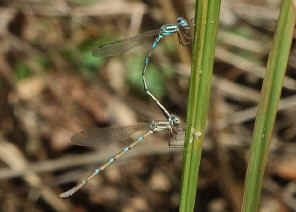

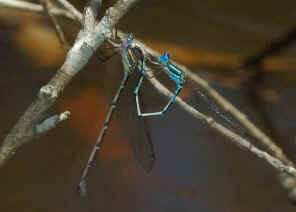
- The couple is said to be 'in tandem position'.
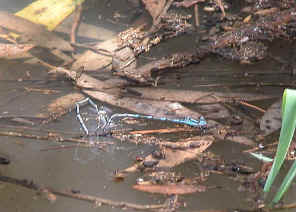
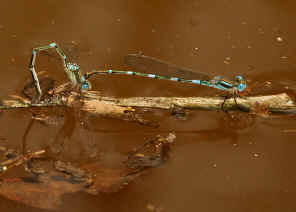
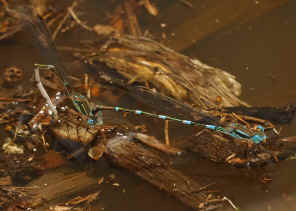
- Female laying eggs with male in tandem.
- We have more information about dragonfly and damselfly reproduction in this page.
- Reference:
- 1. The Australian Dragonflies - CSIRO, Watson, Theisinger & Abbey,1991, p152.
- 2. A Field Guide to Dragonflies of South East Queensland - Ric Nattrass, 2006, p20.
- 3. The Complete Field Guide to Dragonflies of Australia - CSIRO, GŁnther Theischinger and John Hawking, 2006, p36.
- Back to Top
Lay Eggs
